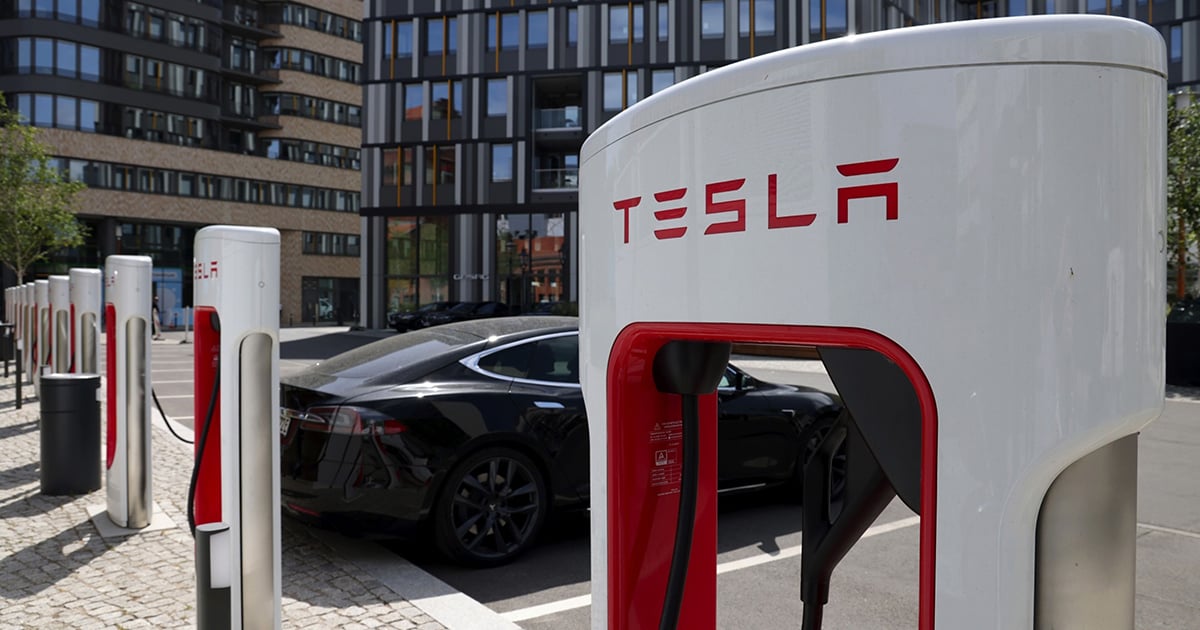
SAN FRANCISCO – Tesla will open part of its U.S. charging network to EVs made by rivals as part of a $7.5 billion federal program to electrify the nation’s highways to cut carbon emissions, the Biden administration said on Wednesday.
Such a move could help turn Tesla into the universal filling station of the EV era – and risk eroding a competitive edge for vehicles made by the company, which has exclusive access to the biggest network of high-speed ‘superchargers’ in the United States.
By the end of next year, Tesla will open 3,500 new and existing superchargers along highway corridors, as well as 4,000 slower chargers at locations like hotels and restaurants, to non-Tesla customers, the administration said.
A White House official said at a briefing that Tesla would be eligible for a subsidy – including retrofitting its existing fleet – as long as its chargers would allow other vehicles with a federally backed charging standard called CCS to charge.
Tesla and CEO Elon Musk did not respond to requests for confirmation and comment.
Tesla has 17,711 superchargers, accounting for about 60 percent of total U.S. fast chargers that can add hundreds of miles of driving range in an hour or less. There are also nearly 10,000 “destination” chargers with Tesla plugs that can recharge a vehicle overnight.
Opening up access to Tesla’s network would be a quick win for an ambitious federal program to build 500,000 EV chargers by 2030, up from 130,000 currently.
Tesla was “one of the early folks out there in this space. It was critically important to us, that everybody be included in the conversation,” White House National Climate Advisor Ali Zaidi said at a press briefing ahead of the announcement, calling Musk constructive and “very open”.
In a conversation with senior government officials last year, Musk said “his intent was to work with us to make his network inter-operable,” Zaidi said.
Plug and pay
Tesla owners pull into a charger spot, plug in their car with Tesla’s own charging device, and the station automatically adds battery power and bills the car owner’s account. To add non-Tesla owners would require a potentially different plug and way to pay.
All EV drivers will be able to access these stations using the Tesla app or website, the administration said.
“Tesla does have a hardware and a software solution” to allow for CCS, the White House official said at the press briefing.
Administration officials did not say whether a contract has been signed, but federal officials will control disbursement of about a third of the $7.5 billion federal program. States will control the other two-thirds.
Investors and U.S. EV enthusiasts have been waiting for action on chargers from Musk, who in mid-2021 said the point of his charging network was “not to create a walled garden and use that to bludgeon our competitors.” The company has opened up some superchargers in Europe and Australia to non-Tesla owners since 2021.
Analysts said the amount of federal funds at stake meant Musk had to either act on the plan or risk other charging companies, such as EVgo Inc. and ChargePoint Holdings Inc., taking the market.
“The amount of money involved in the National Electric Vehicle Infrastructure Formula Program provides a strong incentive for Tesla to adapt its strategy to include the installation of CCS ports,” said Sam Houston, senior vehicles analyst at the Union of Concerned Scientists.
Chris Harto, a senior policy analyst at Consumer Reports, said, “There is no doubt the $7.5 billion in federal charging investment threatens Tesla’s competitive advantage. That is actually the entire point of the program.”
Opening up its networks could grow a funding and revenue stream for Tesla, but could erode the brand’s exclusivity and make it challenging for the automaker to manage the network, analysts said.
“There is a strong likelihood that if they open the supercharger network to other vehicles, their current excellent reliability rate will decline significantly,” said Guidehouse Insights analyst Sam Abuelsamid.